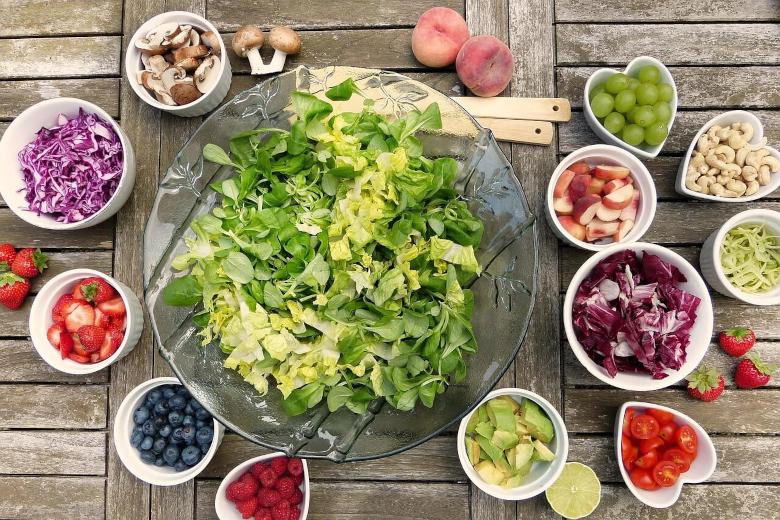
The Best Diet To Lower Blood Sugar And Inflammation
If you’re dealing with chronic pain—or struggling with low energy and blood sugar spikes—your diet might be working against you.
Most people don’t realize how closely pain, inflammation, and blood sugar are linked. But I saw it constantly in my practice. And once I addressed it in myself, the difference was profound.
What you eat doesn’t just fuel your body. It either feeds inflammation… or helps quiet it.
If you’re ready to reduce pain, stabilize your blood sugar, and feel more energized—without relying on medication—this is where to start.
The Inflammation–Blood Sugar Connection
When your blood sugar spikes and crashes, it doesn’t just cause fatigue or brain fog—it also sets off an inflammatory cascade throughout your body.
This inflammation affects your joints, tendons, and muscles. It can irritate your nerves and increase your pain. Over time, it becomes a silent driver of chronic pain—especially when combined with poor sleep, stress, or underlying injuries.
That’s why I began recommending an anti-inflammatory, low-glycemic diet to many of my patients—even those who weren’t diabetic. The results? More stable energy and less pain across the board.
What to Avoid First
Let’s start with the biggest culprits. These foods spike blood sugar, trigger inflammation, and interfere with your body’s ability to repair itself.
🚫 Highly Processed Carbs
White bread, pastries, crackers, pasta, and even “healthy” cereals can spike your glucose and increase inflammation—especially in joints and ligaments.
🚫 Added Sugars
Table sugar, syrups, sweetened yogurts, flavored drinks—even fruit juices—can cause rapid blood sugar surges. These also feed harmful gut bacteria and slow healing.
🚫 Trans Fats and Processed Oils
Hydrogenated oils, margarine, and many deep-fried foods contribute to cellular inflammation. Replace them with healthier fats like olive or avocado oil.
🚫 Alcohol
Alcohol disrupts blood sugar balance and increases systemic inflammation, particularly in the liver and gut. Occasional red wine may be tolerated, but frequent intake slows healing.
What to Eat Instead
The best diet to lower blood sugar and reduce inflammation is simple, whole-food based, and easy to follow long-term.
✅ Vegetables (especially leafy greens and cruciferous)
Spinach, kale, broccoli, cauliflower, and arugula are high in fiber, antioxidants, and minerals. They support blood sugar balance and lower inflammatory markers.
✅ Healthy Fats
Avocados, nuts, seeds, olives, and olive oil contain monounsaturated fatty acids and polyphenols, which protect against inflammation, heart disease, diabetes, and cancer. Fatty fish (like salmon or sardines) provide omega-3s, which help reduce inflammation and keep the heart and the brain healthy.
✅ Protein
Eggs, legumes, lean meats, tofu, fish, and tempeh support muscle repair and stabilize your blood sugar after meals.
✅ Low-Glycemic Fruits
Berries, green apples, and citrus fruits offer fiber and antioxidants without spiking glucose.
✅ Herbs and Spices
Turmeric, ginger, cinnamon, garlic, and rosemary have natural anti-inflammatory properties—and can help modulate blood sugar responses.
Why This Works for Pain Too
A stabilized blood sugar curve means less systemic inflammation, which creates better conditions for joint and ligament healing.
For patients using my 3-step method to realign and support their pelvis or other joints, switching to this style of eating sped up their recovery—sometimes dramatically.
It also helps those with:
Fatigue and burnout
Post-exercise soreness
Menopausal symptoms
Nerve pain or burning
Slow healing injuries
What About Sweet Cravings?
Many patients ask, “What if I still crave sugar?” That’s normal—especially in the beginning. Here are my quick tips:
Eat protein and fat with every meal to reduce cravings
Try a few squares of 90% dark chocolate instead of dessert
Drink cinnamon tea or add cinnamon to oatmeal or smoothies
Eat frozen berries with plain Greek yogurt or chia pudding
Use stevia or monk fruit sparingly for a sweet taste without much glucose impact
Cravings tend to fade after 7–10 days once your blood sugar evens out.
A Final Word on Inflammation and Pain
If you’ve been trying to relieve pain through stretching, rest, or even medication—but not changing what you eat—you may be missing a key piece.
Pain isn’t always structural. Often, it’s chemical.
And when you reduce the foods that feed inflammation and nourish your body with healing nutrients, your results go further—especially when combined with physical support like realignment, a pelvic belt, or prolotherapy.
Let’s Recap:
✅ Inflammation and blood sugar imbalance are deeply connected
✅ Certain foods can increase pain—others help relieve it
✅ Focus on greens, fiber, protein, and healthy fats
✅ Avoid sugar, refined carbs, and processed oils
✅ Use food as part of your healing—not just fuel
Want More Tools to Heal From the Inside Out?
🎥 Register for my free webinar: Live Without Pain
I’ll share simple ways to reduce inflammation, support your body’s natural alignment, and use nutrition to encourage lasting relief.
Wishing you calm, clarity, and healing from within,
— Hélène Bertrand, MD (retired)
CLICK HERE TO RECEIVE LOW BACK PAIN RELIEF in 2 MINUTES!
Disclaimer: This content is for informational and educational purposes only and does not substitute professional medical advice, diagnosis, or treatment. Always consult your healthcare provider before starting any new treatment or making changes to your health regimen. Although Dr. Bertrand is a retired medical doctor, she is not practicing medicine or providing medical care through this website.
